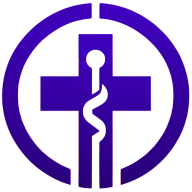14 Crucial Steps to Improve Cybersecurity in Healthcare Systems
Navigating the complex world of cybersecurity in healthcare is critical, and this article brings together pragmatic steps recommended by industry experts. With a focus on actionable strategies, the content delves into multi-layered protection, encryption, and the importance of cultivating a robust security culture. Readers will gain valuable knowledge on how to fortify their healthcare systems against cyber threats, with guidance distilled from seasoned professionals.
- Implement Multi-Layered Protection and Staff Training
- Integrate Cybersecurity into Daily Operations
- Prioritize Encryption and Access Control
- Adopt Zero-Trust Approach and Network Segregation
- Replace Outdated Systems and Educate Employees
- Enhance Vulnerability Identification and Employee Education
- Leverage Blockchain and AI for Proactive Security
- Conduct Regular Security Assessments and Testing
- Understand Asset Context for Targeted Protection
- Create a Culture of Data Security Responsibility
- Encrypt Data and Implement Multi-Factor Authentication
- Secure Health Data with End-to-End Encryption
- Strengthen Defenses Against Phishing Attacks
- Implement Robust Access Controls
Implement Multi-Layered Protection and Staff Training
One crucial step healthcare systems need to take to improve cybersecurity is investing in robust, multi-layered protection strategies that include staff training, secure infrastructure, and real-time threat monitoring. Too often, data breaches occur because of human error or outdated systems, making it essential to educate all healthcare professionals on cybersecurity best practices while ensuring IT frameworks are regularly updated. With the growing reliance on digital records and telehealth, the risk of cyberattacks targeting patient data has never been higher. My main concern is that a breach not only compromises sensitive patient information but also disrupts essential healthcare services, potentially delaying critical treatment. Strong encryption, strict access controls, and continuous monitoring for unusual activity must be the standard to protect both patient privacy and the integrity of care.
A great example of this in practice was when we upgraded our patient management system at The Alignment Studio to ensure compliance with the highest security standards. Given my 30 years of experience in healthcare, I understood the risks associated with poor data security, especially when integrating digital tools into patient care. We implemented end-to-end encryption, multi-factor authentication, and a strict access control system that limited patient data access to only necessary personnel. Additionally, I ensured our team received cybersecurity training to recognize phishing attempts and other cyber threats. This proactive approach prevented potential breaches and strengthened patient trust, demonstrating that a well-secured healthcare system is just as vital as the treatments we provide.

Integrate Cybersecurity into Daily Operations
One key move healthcare systems can make: integrate cybersecurity into their day-to-day operations and make it as core to the operations as patient safety itself. In my experience with healthcare teams, I have seen how outdated systems and over-reliance on legacy software create vulnerabilities, particularly when the busy staff working within them were not trained to catch evolving attacks such as phishing or credential theft. My biggest concern is that for many organizations, cybersecurity is viewed as a checkbox for compliance, not a risk management process that is continually being evaluated.
To prevent this, my advice is to invest in regular staff training, tools that allow monitoring in real time, and updates to systems that prioritize security and maintain workflow. In reality, safeguarding patient data is safeguarding patient trust, and that is an organization-wide responsibility.

Prioritize Encryption and Access Control
One crucial step healthcare systems need to take to improve cybersecurity is prioritizing end-to-end encryption and strict access controls for patient data. Too often, breaches happen not because of sophisticated hacking but due to weak internal security measures, like outdated software, poor password management, or employees falling for phishing attacks. Healthcare organizations need to treat data security as a core part of patient care, not just an IT issue.
One of my biggest concerns is how vulnerable patient data can be if systems aren't regularly updated and audited. Healthcare data is incredibly valuable on the black market, and cybercriminals know that many organizations struggle with legacy systems that aren't built for modern threats. There's also the growing challenge of balancing accessibility with security. Clinicians need fast access to patient records to provide care, but without the right safeguards, that convenience can become a major risk.
At Carepatron, we take cybersecurity seriously by implementing end-to-end encryption, role-based access control, and multi-factor authentication to protect sensitive information. Our platform complies with industry standards, including HIPAA, GDPR, and others, ensuring that healthcare professionals can trust our security measures. Beyond just having the right technology in place, education is key. Healthcare providers need to be trained on best practices, from recognizing phishing attempts to understanding why data security is a shared responsibility. The stronger the collective awareness, the better the protection against potential threats.

Adopt Zero-Trust Approach and Network Segregation
One key step healthcare systems must take to improve cybersecurity is adopting a zero-trust approach, which means no one gets automatic access to sensitive data, not even employees, without proper verification. This includes using strong passwords, multi-step logins, and limiting access to only those who truly need it. Encrypting patient records also ensures that even if hackers break in, the information remains unreadable. These steps help keep medical and personal data safe from cyber threats.
A major concern is the rising number of cyberattacks targeting healthcare facilities. More than 170 million people in the U.S. had their medical and personal data breached in 2024, showing just how vulnerable the system is. Hackers can steal patient records, disrupt urgent care services, and even hold data hostage for ransom. To prevent this, healthcare providers must invest in better security, train staff to recognize cyber threats, and use real-time monitoring to
catch attacks before they cause harm.

Replace Outdated Systems and Educate Employees
I think the top priority for healthcare cybersecurity is segregation of the network and strict isolation of sensitive data from the public internet. In my opinion, this is the foundation of patient data protection. Exposing electronic health records or other critical data via internet-connected devices is an unacceptable risk. Critical systems should be on isolated networks only accessible through tightly controlled VPNs with stringent access controls. I'm particularly concerned that many healthcare systems, especially smaller clinics, don't have this layer of separation and are easy targets for attacks.
Beyond segmentation, I strongly believe in a least privilege access model where staff only have access to the data they absolutely need. This limits the impact of a breach. For example, admin staff shouldn't have access to patient medical history, just as medical staff don't need access to financial records. Too often, I see organizations granting broad access when granular controls should be the norm.
Alongside network segmentation, I think multi-factor authentication (MFA) is non-negotiable. Even with strong network controls, MFA adds an extra layer of security. Simple passwords are way too weak, and every access point from workstations to mobile devices should have MFA. A good example is a password and biometric scan and time-sensitive code; this reduces the risk of unauthorized access. I'm concerned that many healthcare providers still don't apply MFA consistently and have gaps in security.
Enhance Vulnerability Identification and Employee Education
One crucial step healthcare systems must take to improve cybersecurity is replacing outdated systems. Too often, hospitals and clinics rely on legacy technology that no longer receives security updates. I've seen this firsthand while working with healthcare providers. One client struggled with an old patient records system that couldn't be patched. It became an open door for cybercriminals. We helped them transition to a more secure, HIPAA-compliant platform, and immediately, their risk dropped. If a system is too old to be secured, it's too old to be trusted with sensitive patient data.
One of my biggest concerns about data security in healthcare is the human factor. Even the best security tools can't protect an organization if employees don't follow best practices. I've worked with hospitals where doctors and nurses reused weak passwords or clicked on phishing emails, unknowingly giving attackers access to critical systems. Without proper training, mistakes happen. Healthcare organizations need continuous cybersecurity education, not just a one-time seminar. Employees should know how to spot phishing emails, use strong passwords, and report suspicious activity.
At Tech Advisors, we've helped many healthcare clients build better security habits. A simple change, like enforcing multi-factor authentication (MFA), can prevent most credential-based attacks. Another key step is securing data transmissions. I've seen cases where patient information was emailed without encryption, putting it at risk. Healthcare providers must ensure data is always encrypted when shared across systems. Protecting patient data isn't just about compliance--it's about trust. If a hospital suffers a breach, that trust is gone. Strong cybersecurity practices aren't optional; they're essential for patient safety.
Leverage Blockchain and AI for Proactive Security
After the unusually public series of breaches we've seen over the past year, it's clear that we're at a critical point when it comes to data security in healthcare. Healthcare systems need to be more proactive about enhancing their approach to identifying vulnerabilities within their networks and implementing continuous employee education. A once-a-year training just isn't sufficient anymore.
What really worries me, though, is how some of the most trusted and widely used vendors are still leaving organizations so vulnerable. It's a big reminder that we all need to stay vigilant, and intelligently navigate risks.
Conduct Regular Security Assessments and Testing
Regulations are a great step forward for healthcare cybersecurity. However, new threats are arriving each day, and healthcare must be proactive to fend off these threats. Many companies are already developing blockchain storage for healthcare systems to improve security. In addition, AI is being developed for multiple uses in healthcare, from cybersecurity to diagnoses. The adoption and maximization of these technologies will help us ensure that healthcare systems remain safe and operational despite attempts at breaches. Lastly, we must emphasize the human factor in cybersecurity and ensure that all healthcare professionals are extremely skilled at identifying phishing communications. This is always the weakest point in any system, and most breaches happen with phishing. Ongoing education is a must. Everyone must keep phishing at the forefront of their mind at all times.

Understand Asset Context for Targeted Protection
While there are several facets of cybersecurity that healthcare organizations should prioritize, if I have to choose one, it would be conducting regular security assessments, vulnerability scans, and penetration testing. This can help identify and address potential weaknesses in the IT infrastructure and applications, especially since most healthcare organizations still rely on legacy IT infrastructure and software, which may have outdated security measures and be more susceptible to cyberattacks. This proactive approach can help prevent security breaches and data compromise.
Healthcare data is the most expensive commodity on the dark web, which is why healthcare systems are often targeted by ransomware attacks. This disrupts operations, compromises patient care, and results in significant financial and reputational damage to the healthcare organization.
Create a Culture of Data Security Responsibility
My name is Gilad, and I represent Tim Matthews, Chief Marketing Officer at CyCognito, with 35 years of experience in the cybersecurity industry, having worked for companies like RSA, Symantec and Imperva. He leads marketing for CyCognito, a startup that raised $153 million to identify all attacker-exposed assets in the IT ecosystem.
Here are Tim's insights about cybersecurity for healthcare:
##
Healthcare systems need to understand not just what devices, networks, and applications are accessible to attackers but also which of those assets are most attractive, and therefore most vulnerable.
The context around the asset - who is responsible for remediating issues, what other systems it connects to, and what part of the ecosystem it sits in - is not just nice-to-have, it's critical data that should inform tactical decisions about remediation priorities. Healthcare systems should also investigate all potential testing methods that can be deployed without causing disruption to the systems they're testing.
##
Let me know if you'd like to use this response or parts of it in your article. If possible, we would greatly appreciate giving credit to CyCognito with a link to www.cycognito.com.
If you decide to use our response in the article, please let us know when it is published so that we can help promote it across CyCognito's social media platforms!
Thank you for your time and consideration,
Gilad David Maayan
Agile Press Relations, for CyCognito
Mobile: +972-50-6570046
Email: giladm@agileseo.co.il
LinkedIn: linkedin.com/in/giladdavidmaayan

Encrypt Data and Implement Multi-Factor Authentication
One of the first and most effective strategies I implemented to address data security challenges in health informatics was to prioritize staff training. I quickly realized that no matter how advanced the technology or tools are, they are only as effective as the people using them. So, I made it a top priority to ensure that everyone on the team, from leadership down to entry-level staff, received ongoing education about the importance of data security. This wasn't just a one-time thing, it's a continuous process that adapts with the evolving landscape of cybersecurity threats.
I focused on creating a culture where everyone felt responsible for protecting sensitive data. Through regular training sessions, we ensured that everyone understood the potential risks, from phishing scams to insider threats, and how to recognize these dangers. We didn't just want our staff to be aware of the threats, we wanted them to know exactly what steps to take to mitigate those risks, such as using strong passwords, identifying suspicious emails, and following secure communication protocols.
The training also included practical exercises and simulations so staff could practice responding to potential security threats in real-time. This not only reinforced their understanding but also gave them the confidence to act quickly and effectively in the event of a breach. By embedding data security into the daily routine and culture, we've significantly reduced human error and created an environment where everyone actively contributes to safeguarding sensitive information. This approach has paid off with fewer security incidents and a more aware and empowered team.
Secure Health Data with End-to-End Encryption
To reduce health tech data breach risks, start by encrypting all data, both at rest and in transit. Regularly update software and firmware to close security gaps. Limit access to sensitive information with strong authentication protocols. Conduct regular staff training on phishing and other cyber threats.
A healthcare client of mine once faced a targeted phishing attempt aimed at accessing patient records. Because they had implemented multi-factor authentication and strict access controls, the attack was stopped before any data was compromised. This incident reinforced the importance of layered defenses and constant vigilance.
Integrating these steps into your security strategy can safeguard patient data and build trust with users.

Strengthen Defenses Against Phishing Attacks
One effective strategy we've implemented to address data security challenges in health informatics is the adoption of end-to-end encryption for all sensitive health data exchanges. This ensures that data remains protected at every stage—during transmission and while at rest—making it far more difficult for unauthorized parties to access or breach the system. We also integrate multi-factor authentication (MFA) for all users accessing critical systems, which adds an extra layer of security against potential cyberattacks.
This strategy has significantly strengthened our data security framework, providing peace of mind to both clients and patients. In the highly regulated healthcare industry, safeguarding sensitive patient information is not just essential for compliance, but also for maintaining trust. By proactively investing in these robust security measures, we've been able to minimize the risks associated with data breaches and improve the overall integrity of our health informatics systems.
Implement Robust Access Controls
If healthcare providers want to tighten cybersecurity, they need to start with end-to-end encryption and strict access controls. With so much patient data being shared digitally, keeping it secure isn't optional--it's essential. Encrypting data at every stage and ensuring only the right people have access goes a long way in preventing breaches.
Another major concern? Outdated systems. Many clinics still rely on older software or manual processes that create security gaps. Regular updates and seamless integrations can help prevent vulnerabilities and strengthen overall protection.
At Noterro, we've seen how secure, well-integrated systems can help clinics manage daily tasks--like documentation, scheduling, and billing--while minimizing security risks. When data is stored and accessed safely, it not only protects patient privacy but also ensures smoother operations for healthcare providers.








